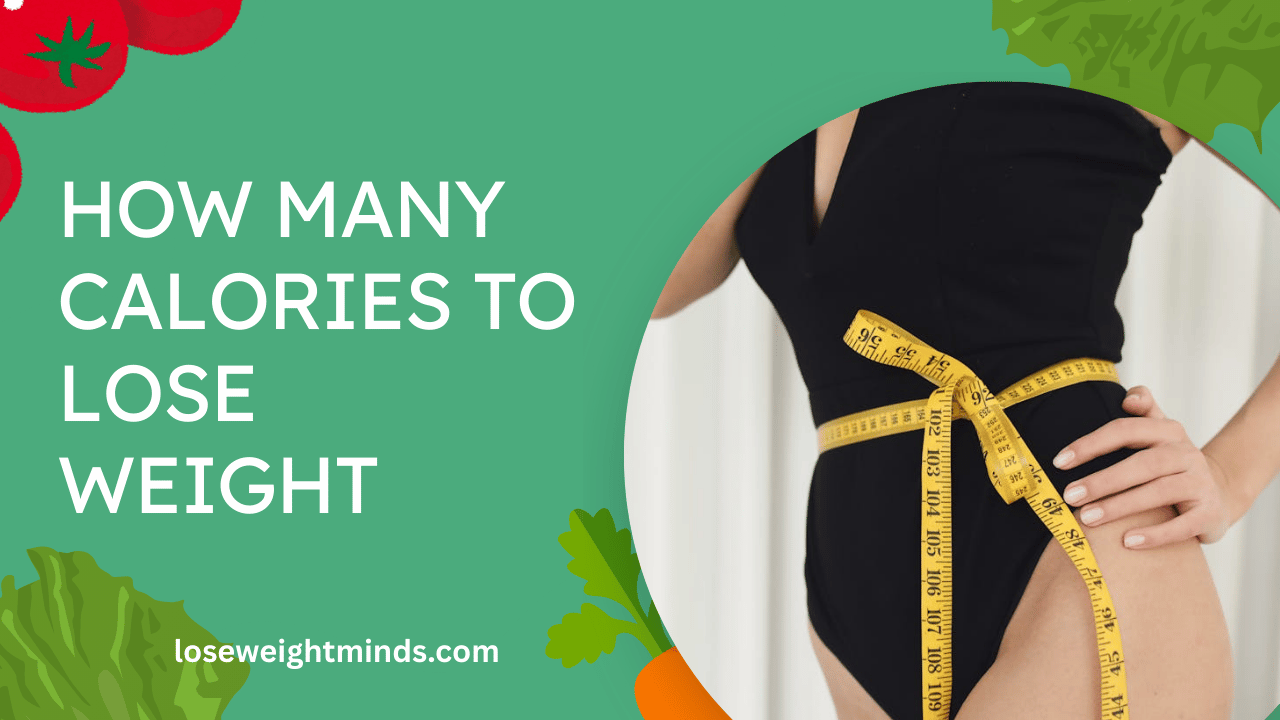Losing weight can seem like a daunting task, but it is fundamentally a straightforward process of science and personal commitment. At its core, weight loss is about creating a calorie deficit, meaning you consume fewer calories than your body uses. This article will explore how many calories you need to consume to effectively lose weight while maintaining a healthy lifestyle.

Understanding Caloric Needs
Before diving into the specifics of weight loss, it’s vital to understand what caloric needs are and how they vary from person to person. Caloric needs are determined by several factors, including age, sex, weight, height, and activity level. The total number of calories your body requires each day is known as your Total Daily Energy Expenditure (TDEE). This figure is crucial in establishing how many calories you should consume to lose weight.
Calculating Your Basal Metabolic Rate (BMR)
To determine your TDEE, you first need to calculate your Basal Metabolic Rate (BMR). BMR represents the number of calories your body needs to maintain vital functions at rest, including breathing, circulation, and cell production.
Estimating Total Daily Energy Expenditure (TDEE)
Once you have your BMR, you can estimate your TDEE by multiplying your BMR by an activity factor that reflects your lifestyle:
- Sedentary (little or no exercise): BMR × 1.2
- Lightly active (light exercise/sports 1-3 days a week): BMR × 1.375
- Moderately active (moderate exercise/sports 3-5 days a week): BMR × 1.55
- Very active (hard exercise/sports 6-7 days a week): BMR × 1.725
- Super active (very hard exercise/sports & a physical job): BMR × 1.9
The resulting number is your TDEE, representing the number of calories to maintain your current weight.
Creating a Caloric Deficit
To lose weight, you need to create a caloric deficit. A common rule of thumb is that a deficit of 3,500 calories will result in a loss of approximately one pound of body weight. However, sustainable weight loss is typically achieved through a more gradual approach.
How Many Calories Should You Cut?
Cutting calories drastically is not advisable. A safe and sustainable approach suggests cutting 500 to 1,000 calories from your TDEE daily, leading to a weight loss of about 1 to 2 pounds per week. This range is generally considered safe and manageable for most individuals. Here’s how to determine how many calories to consume for weight loss:
- Determine your TDEE – Using the calculations discussed earlier, find out how many calories you need to maintain your current weight.
- Decide on a weight loss goal – Determine how much weight you aim to lose each week, keeping in mind that a deficit of 500-1000 calories daily can lead to 1-2 pounds of weight loss per week.
- Calculate your target caloric intake – Subtract the caloric deficit from your TDEE.
For example, if your TDEE is 2,500 calories, a cut of 500 calories for weight loss would mean consuming around 2,000 calories per day.
Monitoring Progress
Tracking your progress is necessary for successful weight loss. It’s essential to consistently monitor your caloric intake and weight changes to ensure you are on the right trajectory. Here are some tips for tracking progress effectively:
- Food Diary or Apps: Keep a record of what you eat. Using apps like MyFitnessPal or Lose It! can simplify this process.
- Weekly Weigh-Ins: Weigh yourself once a week, at the same time, under similar conditions (e.g., after waking up). This will help you track trends rather than fixate on daily fluctuations.
- Adjust as Necessary: If you’re not seeing the progress you desire, it may be necessary to adjust your caloric intake or increase physical activity.
The Role of Macronutrients
While calorie counting is essential for weight loss, so is focusing on what you eat. The macronutrient composition of your diet can significantly influence satiety, energy, and overall health. Macronutrients include carbohydrates, proteins, and fats:
- Proteins: Critical for muscle repair and growth, protein also aids in keeping you feeling full. Aim for around 15-30% of your total calorie intake to come from protein.
- Fats: Healthy fats are essential for hormone production and overall health. They should make up about 20-35% of your total caloric intake, focusing on sources like avocados, nuts, olive oil, and fatty fish.
- Carbohydrates: While often demonized, carbohydrates are the body’s primary source of energy. They should account for about 45-65% of your total daily calories, focusing on whole grains, fruits, and vegetables.
Combating Plateaus
As you embark on your weight loss journey, you may encounter plateaus where your weight loss stalls despite maintaining a caloric deficit. This is a common experience and can be due to several factors, including metabolic adaptation or changes in physical activity levels. To overcome plateaus:
- Reassess Your Calories: As you lose weight, your TDEE will decrease. Ensure you recalculate your caloric needs regularly.
- Increase Activity: Incorporate more physical activity into your routine or adjust your workout regime to include resistance training, which builds muscle and can boost your metabolism.
- Incorporate Intermittent Fasting: Some find success with intermittent fasting, which can help regulate insulin levels and make it easier to maintain a caloric deficit.
Prioritizing Nutritional Quality
While focusing on caloric intake is crucial for weight loss, it’s equally important to prioritize nutritional quality. Instead of depriving yourself of your favorite foods, focus on incorporating nutrient-dense foods that can satiate your hunger while providing the necessary vitamins and minerals essential for your overall well-being.
Tips for Nutritional Quality
- Choose Whole Foods: Focus on whole, unprocessed foods, which tend to be more filling and nutrient-rich than processed options.
- Stay Hydrated: Proper hydration can help control hunger and support metabolic processes. Aim for at least 8 cups (about 2 liters) of water daily.
- Mindful Eating: Practicing mindful eating can help you recognize hunger cues and prevent overeating. Take time to enjoy meals without distractions.
Conclusion
Finally, the journey of losing weight is a personalized and dynamic process. Understanding your caloric needs and maintaining a caloric deficit is necessary, but so is appreciating the role of nutritional quality, macronutrients, and lifestyle factors. Every individual’s body responds differently to dietary changes, so it’s essential to listen to your body and be patient with the process.
Remember, sustainable weight loss is not just about the calories you consume today, but about establishing healthy habits that will benefit your overall lifestyle long term. Always consult with a healthcare professional or a registered dietitian before embarking on any significant changes to your diet or exercise routine. By approaching weight loss with a balanced mindset, you will pave the way for lasting results and enhanced well-being.


